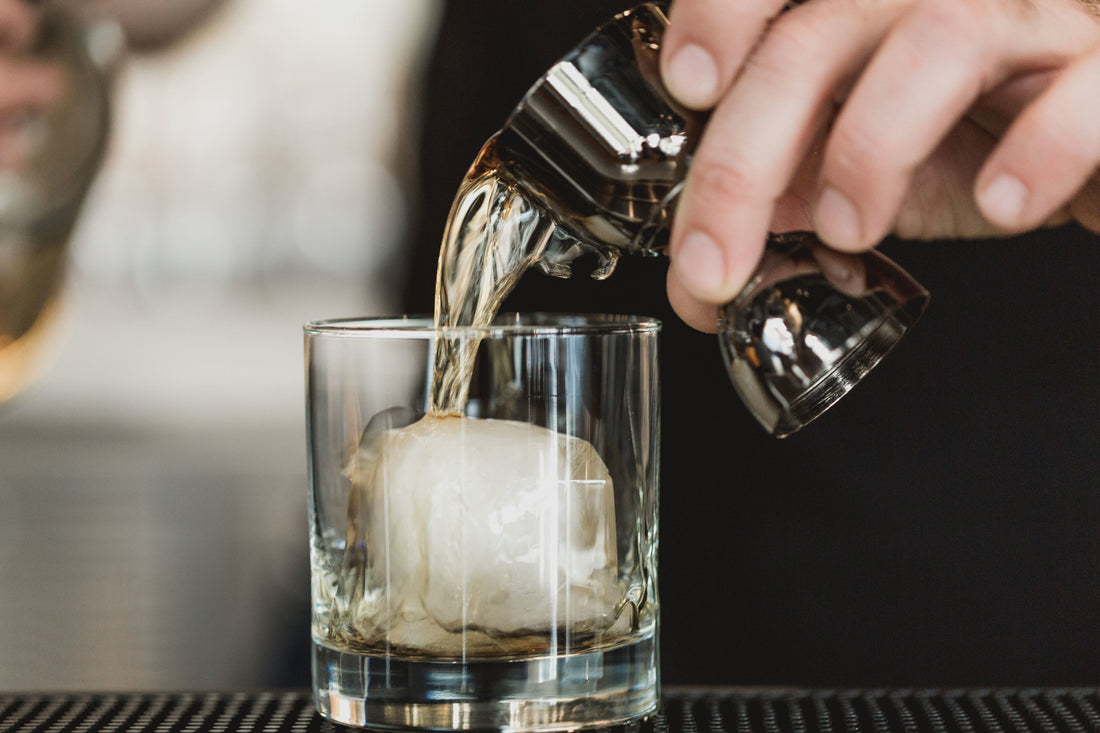
Baijiu Tasting Guide
Share
Baijiu tasting is an art that blends sensory experiences with cultural elements, allowing one to appreciate its profound charm through systematic methods. To savor high-quality baijiu, you should follow four core steps: observing the color, smelling the aroma, tasting the flavor, and evaluating the finish. Each step carries unique significance and requires specific techniques.
1. Observing the Color
Pour the liquor into a clean, dry tasting glass until it reaches between 1/2 and 2/3 of the glass's capacity. Hold the glass against a white paper or white background in a well-lit and softly illuminated environment, observing it both directly and from an overhead angle.
Quality Standards: The baijiu should be colorless (or may exhibit a slight yellowish hue due to aging), clear and transparent, with no suspended particles or sediment.
Tips for Operation: Gently swirl the glass to observe the flow of the baijiu and the "legs" (the streaks that form on the inside of the glass).
2. Smelling the Aroma
Smelling the aroma is a crucial part of the tasting process. Place the glass 1-3 centimeters below your nose, slightly lower your head, and first take a light sniff of the still aroma (the initial aroma). Then, gently swirl the glass and take a deep sniff of the main aroma.
Key Techniques:
Inhale Only: Avoid exhaling to prevent interference with the aroma and the introduction of moisture.
Types of Aromas: Different aroma styles vary significantly. For example, sauce-aroma baijiu features a roasted and soy sauce-like aroma, strong-aroma baijiu has a aged aroma and lees (fermented grain) aroma, and light-aroma baijiu offers a delicate aroma reminiscent of green apples and corn silk.
Poor-Quality Aromas: Low-quality baijiu may produce unpleasant aromas such as a pungent alcohol smell, artificial fragrance, or sour and musty odors.
When smelling, maintain even breathing to avoid olfactory fatigue from deep inhalation. It is advisable to take a short break after every three sniffs to restore nasal sensitivity.
3. Tasting the Flavor
Take a small amount of the liquor sample (about 2-3 ml) into your mouth, allowing it to spread evenly across your tongue, making contact with the tip, sides, and back of your tongue. Utilize different regions of your mouth to perceive various tastes (e.g., sweetness on the tip, sourness on the sides, and bitterness at the back). Hold the liquor in your mouth for a few seconds and carefully discern the flavors.
Taste Experience: Feel the liquor's smooth sweetness, mellow richness, refreshing cleanliness, and overall harmony, as well as whether it has any harsh, rough, or off-flavors.
4. Evaluating the Finish
After swallowing the baijiu, pay attention to the persistence and comfort of the flavors in your mouth (i.e., the aftertaste). High-quality baijiu should have a long-lasting aftertaste without any unpleasant sensations.
Baijiu tasting is not just a sensory pleasure but also an understanding of the brewing process, aging time, and regional terroir. By following the four-step method of "observing, smelling, tasting, and evaluating," even consumers new to baijiu can gradually appreciate its profound charm. We hope this detailed guide will help you better understand and appreciate the profound world of Chinese baijiu.
